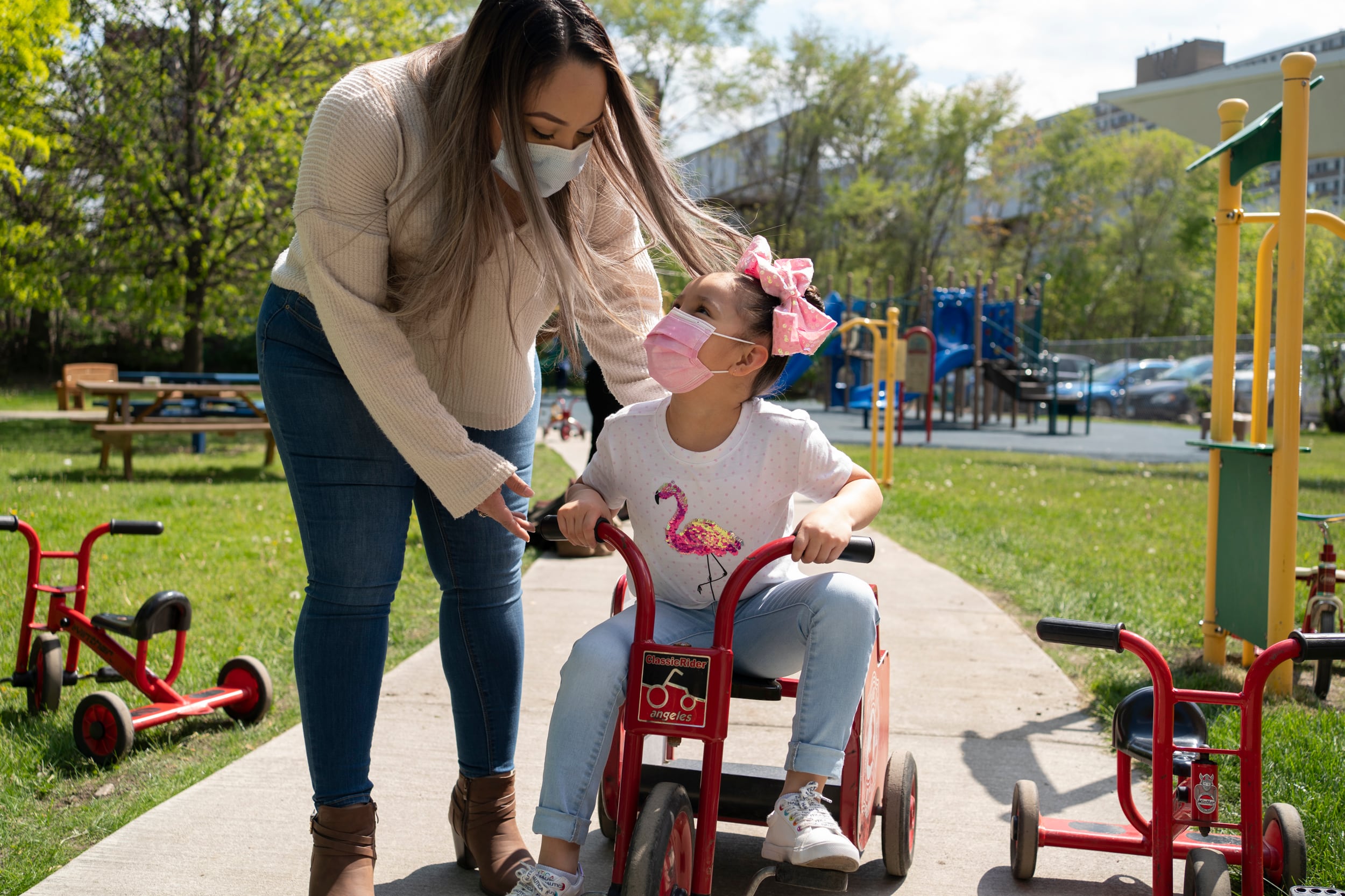Earlier this year, Congress decided to try a remarkably straightforward approach to reduce child poverty: give their families more money.
As part of the Biden-backed American Rescue Plan, Congress expanded the child tax credit, which provides cash benefits to most households with children, including some of the country’s poorest families. The IRS has been distributing that money monthly since July.
How well has it worked? Initial data suggests the expanded program has cut child poverty and child hunger substantially — although the impact would be greater if all eligible families were receiving the payments. There’s not hard evidence yet, but previous research suggests that the monthly payments also could boost student learning. Indeed, many low-income families say they have used the funds on their children’s education.
There is “consistent and broad evidence that this policy is working as intended,” said Zach Parolin, who has studied the program at Columbia University’s Center on Poverty and Social Policy. “There’s some strong evidence from the past that these types of income boosts will be beneficial for students at increasing their learning potential.”
But the move was only temporary. Now, Congressional Democrats and the Biden administration are wrangling over whether and how to extend the program as part of a major social spending package. Critics, including many Republicans, have argued that it discourages work and amounts to federal overreach. If no deal is reached, the size of the benefit would fall and the country’s poorest households would be partially or fully excluded from it.
Here’s what we’ve learned about how the expanded program has affected families and children so far.
The child tax credit has substantially reduced poverty and hardship among children and families.
The new monthly payments began going out in July: $300 per month for each child under 6 and $250 per month for older children. (The monthly checks will continue through December. The other half of the credit will be distributed in a lump sum at tax time.)
The money seemed to pay almost immediate dividends to low-income families. A Census survey showed most low-income parents said they spent at least some of it on food, more than any other item. Many also said that the extra money helped pay for regular expenses. (Data on how the money is being used is based on parents’ responses to surveys, not actual spending data.)
Before, about 30% of low-income parents said their household sometimes or often didn’t have enough food to eat. After July, that proportion sharply dropped to 21%. Low-income households without children showed no similar decline, suggesting that the change was directly due to the new tax credit.
Another analysis estimated that the payments prevented 2 million children from going without enough food.
Lafleur Duncan, a parent in Brooklyn, has been using some of the federal money to feed her son, who just entered high school. Duncan, who lost her job as a nanny when the pandemic hit, said her family would not have had enough food otherwise. “It stopped the big hole,” she said. “It’s been hard enough, but it would have been harder without that extra help.”
After the monthly payments reached families, child poverty also appeared to fall significantly. (Poverty is defined by a family’s monthly income — below roughly $2,300 for a family of four, for instance.) One study estimated that the tax credit reduced the poverty rate among children from about 16% to 12% — effectively keeping 3 million children out of poverty. Black and Latino children were especially likely to benefit.
If Congress doesn’t renew it, the expansion would end after this year. The credit would drop back to $2,000 per child, it would be delivered in one lump sum at tax time rather than monthly, and the poorest families would no longer be fully eligible. That would mean poverty and food insecurity would likely jump back up.
Biden’s latest proposal would keep the increased payments — of $3,600 or $3,000 annually depending on the child’s age — for one year. After that, they would fall back to $2,000 per child, but the poorest families would remain fully eligible for the increased amount.
“We are praying and hoping that they will expand it because a lot of parents are still struggling,” said Duncan, who has been an advocate for the program.
Some eligible families have not received the benefit — reducing its impact on poverty.
In many ways, the child benefit seems to be working as intended. But in one key respect it isn’t: Not all families eligible for the new money are receiving it.
The problem appears to be that the benefit is administered by the IRS, which directly deposited the monthly funds into households’ bank accounts. However, many low-income families don’t file federal income taxes because they don’t owe anything. Those are typically the families who are newly eligible for the program.
Teresena Medlock, of Memphis Lift, a parent advocacy group, has seen that play out with some of the families she works with. “Some of the families, they don’t have income, so they have to go through other channels,” she said.
Those parents have to fill out a separate online form in order to claim their benefit, but many may not realize that. Some nonprofits and government agencies are working to spread the word. (The last day to claim the benefit this year is Monday; after that the credit can only be collected via tax filing next year.)
It’s not clear how many eligible families have not gotten the benefit, but it’s likely several million or more. In the Census survey, low-income families were the least likely to say they have received the payments.
This has meant that initial projections that the child tax credit would cut poverty by 40% so far appear to have been overstated. The study of monthly poverty rates found that the payment reduced poverty by about 25% — a meaningful amount, but not as large as it would be if all eligible families were receiving it.
“Some are still missing out,” said Parolin. “The current effects aren’t living up to the potential effects.”
Many families say they are spending the new money on education.
Many families who are getting the money are spending it on more than household expenses.
In the Census survey, 30% of all families (and 40% of low-income families) said they used some of the money for educational costs, including school supplies, private school tuition, transportation to school, or tutoring. Black and Hispanic parents were especially likely to use the money for education. This was among the most common things parents said they spent the money on.
Ericka Njemanze, who lives in Oakland, California, with her three school-age kids, says she’s used the extra money to help pay for an after-school program that costs $600 a month. “They’re getting social engagement,” she said. “They’re getting educational activities that they didn’t get two years ago.” Another $32 a month goes to a supplementary online math program that she works through with her son, who struggles in math. “It helps me show him multiplication,” she said.
Medlock, of Memphis Lift, thinks even more low-income families would use the money for education if they had their basic needs met. “Do I put shoes on my child’s feet and do I put clothes on their back or do I pay for two hours of tutoring?” she said. “As a parent, we’re going to feed, clothe and put shoes on our child.”
For parents who are using the money for education, the program is functioning a bit like what’s known as an education savings account, which provides a pot of money that families can use on their child’s education. This idea is typically championed by school choice advocates, and some have noted the connection. “Democrats Accidentally Deliver a Massive Win for School Choice,” two writers recently wrote in the National Review, a conservative publication, referring to the child tax credit.
In this case, though, parents aren’t required to spend the money on education, and the funds don’t come out of government education budgets.
National school choice groups have largely been mum on the program and whether it should be continued. Spokespeople for EdChoice and the American Federation for Children, two prominent school choice groups, both said they do not consider the child tax credit a school choice initiative. (EdChoice is a supporter of Chalkbeat.)
But Derrell Bradford, president of 50CAN, a school reform group, says he does think it’s a form of parental choice.
“This to me is great news,” he said. “Low-income families, when given the opportunity to spend money on their children, make pretty good decisions about what they want to spend the money on, including education.”
Because the expansion launched so recently, research hasn’t yet examined whether it is helping children do better in school. But prior studies have found that anti-poverty programs, including an earlier version of the child tax credit, help students make tangible academic gains. Researchers recently estimated that because academic benefits are likely to accrue from the child tax credit, expanding the program would partially pay for itself in the long term.
Correction: An earlier version of this piece misspelled Derrell Bradford’s name.






